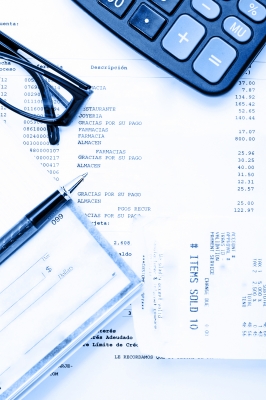Tips on Managing Your Checkbook
Your checkbook may look like your ninth grade social studies notes complete with scratched out, erased to a hole notations; doodles of female anatomy; and maybe your favorite team logo. Or, it may look like pristine penmanship that would make your mom and third grade teacher proud. Either way, these tips on managing your checkbook are a must-look-over to make sure you are on the right track or you need to revamp your whole system.
Use Pencil (Duh?)
If you are not using a pencil to balance your checkbook you might as well use finger paints. It is essential to be able to erase a mistake without creating mayhem that will inevitably confuse you. Make sure it is a #2 pencil that has no problem being erased and not some newfangled, specialized pencil that is basically akin to a pen.
Interest/Advantageous Corrections
If any interest is earned on your account be sure to diligently keep it logged into your records. Many people do not pay attention to interest as it is usually a bleak amount or they feel it is a bonus to have a few bucks magically appear. Well, avoiding this notation can have you wondering for days where it came from before you figure it out. Look for it on the front page of your statement.
Charges
Notating random charges is paramount in keeping current. These will also show up on your account but can be hidden. Scour through for fees applied from ATM transactions, insufficient funds, checks or monthly services. In addition, anytime you use an ATM that is not attached to your bank, tuck the receipt in your wallet (no matter how drunk you may be) and apply it the next day when you can see straight.
Statement Search
Believe it or not, banks are run by humans and humans make mistakes. Be sure and take the time to look over your statement every month alongside your checkbook. Make sure all deposits, withdrawals and checks have cleared accordingly. If you find a problem, shout out to your local branch.
Other Tips
Here are a few other tips to keep you smooth sailing.
• Purchase Receipts – Save these in your wallet or a relegated bag pouch until you have a chance to get home and notate your spending history for that day.
• Bank Receipts – These can be your only rock solid evidence of a transaction if a bank computer decides to go haywire.
• Pay with a Money Order – If you know that a certain organization takes forever to cash a check, pay with a money order. This will save you months of thinking you have more in your account than you really do.
• Take a Break – When balancing your checkbook take breaks to clear your head and avert your eyes. Mistakes will become minimal.
Dealing with money can often be s stressful time. Even if math is your strong suit do not assume anything and use these tips on managing your checkbook.
